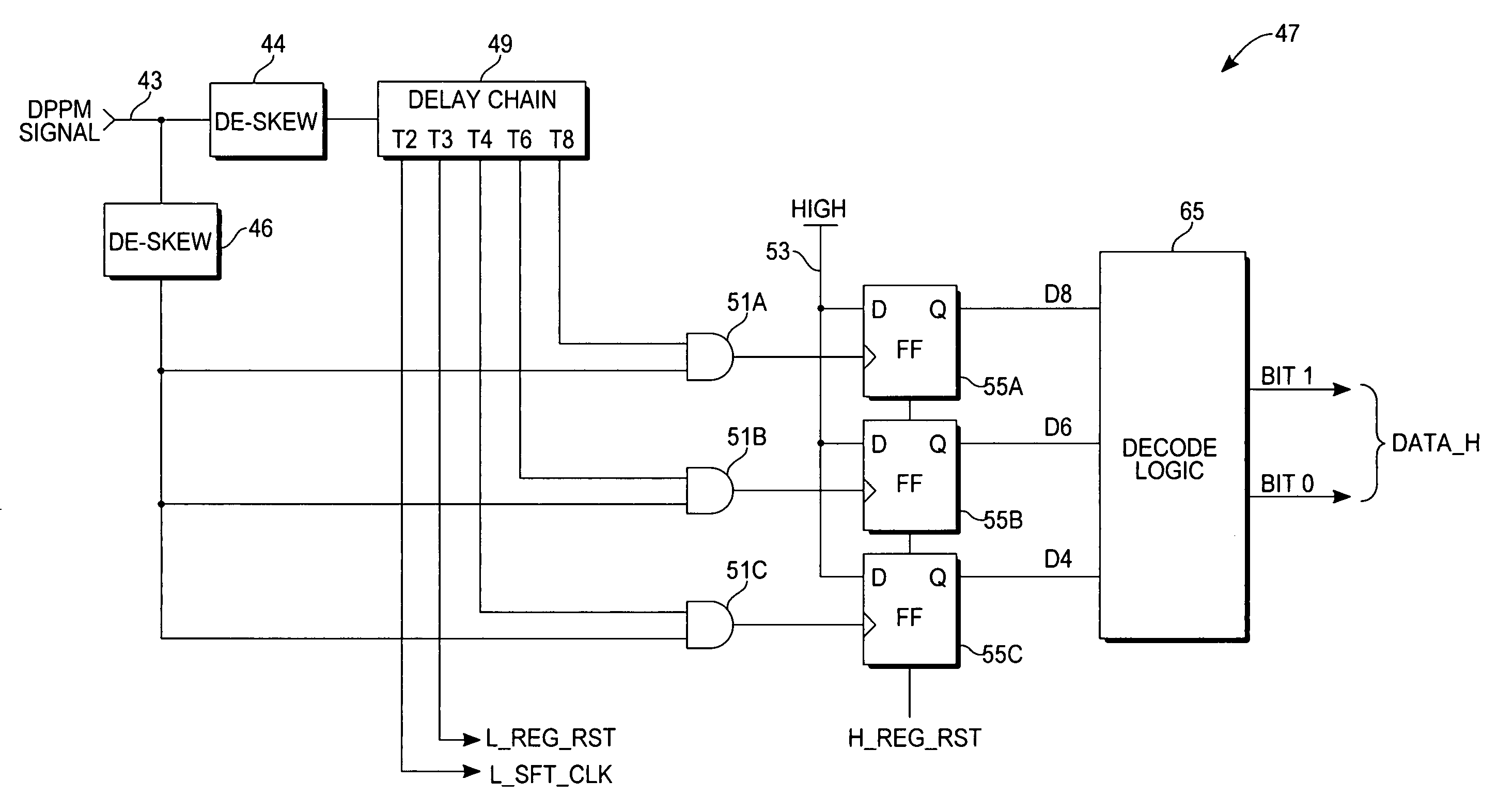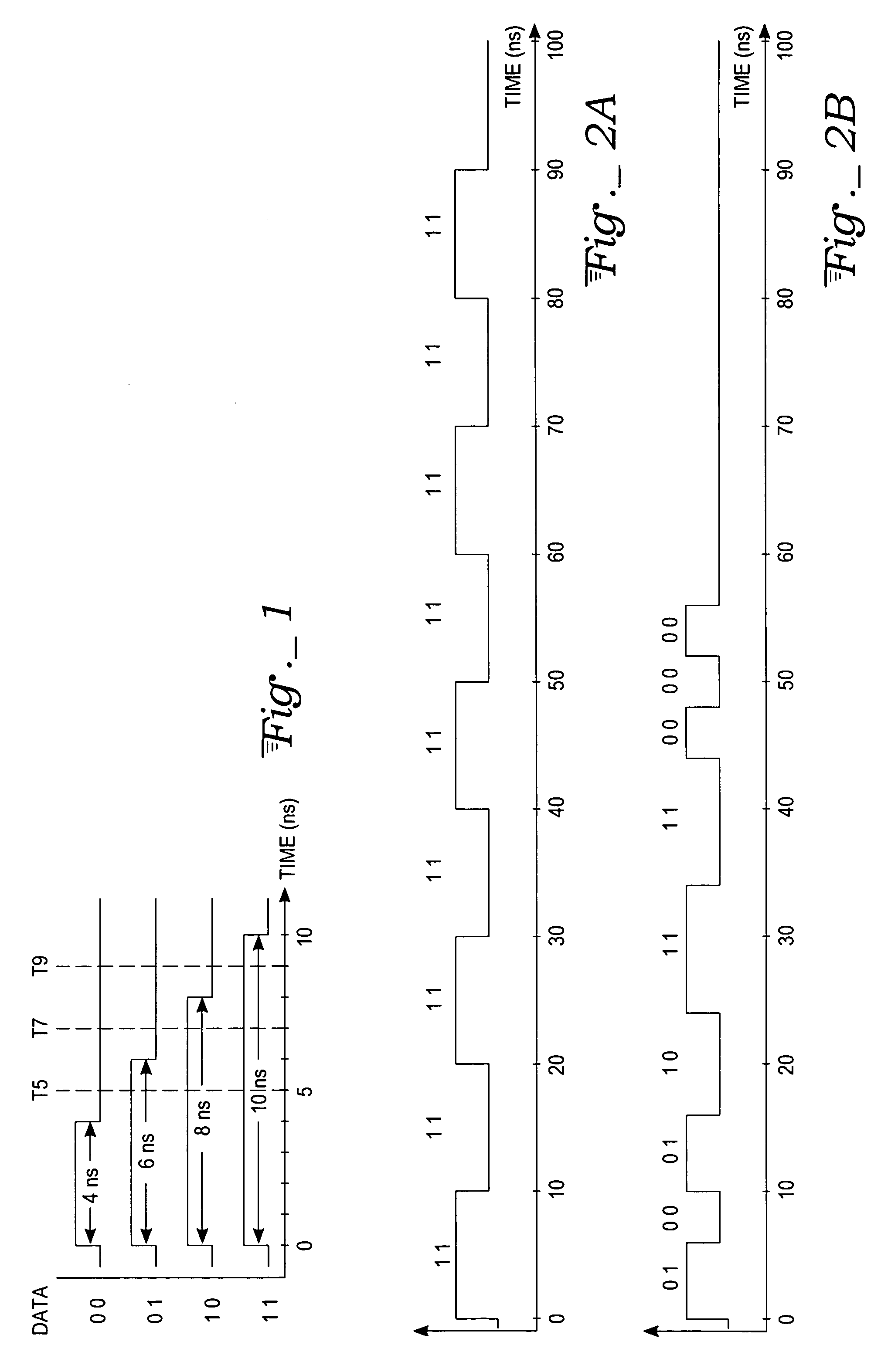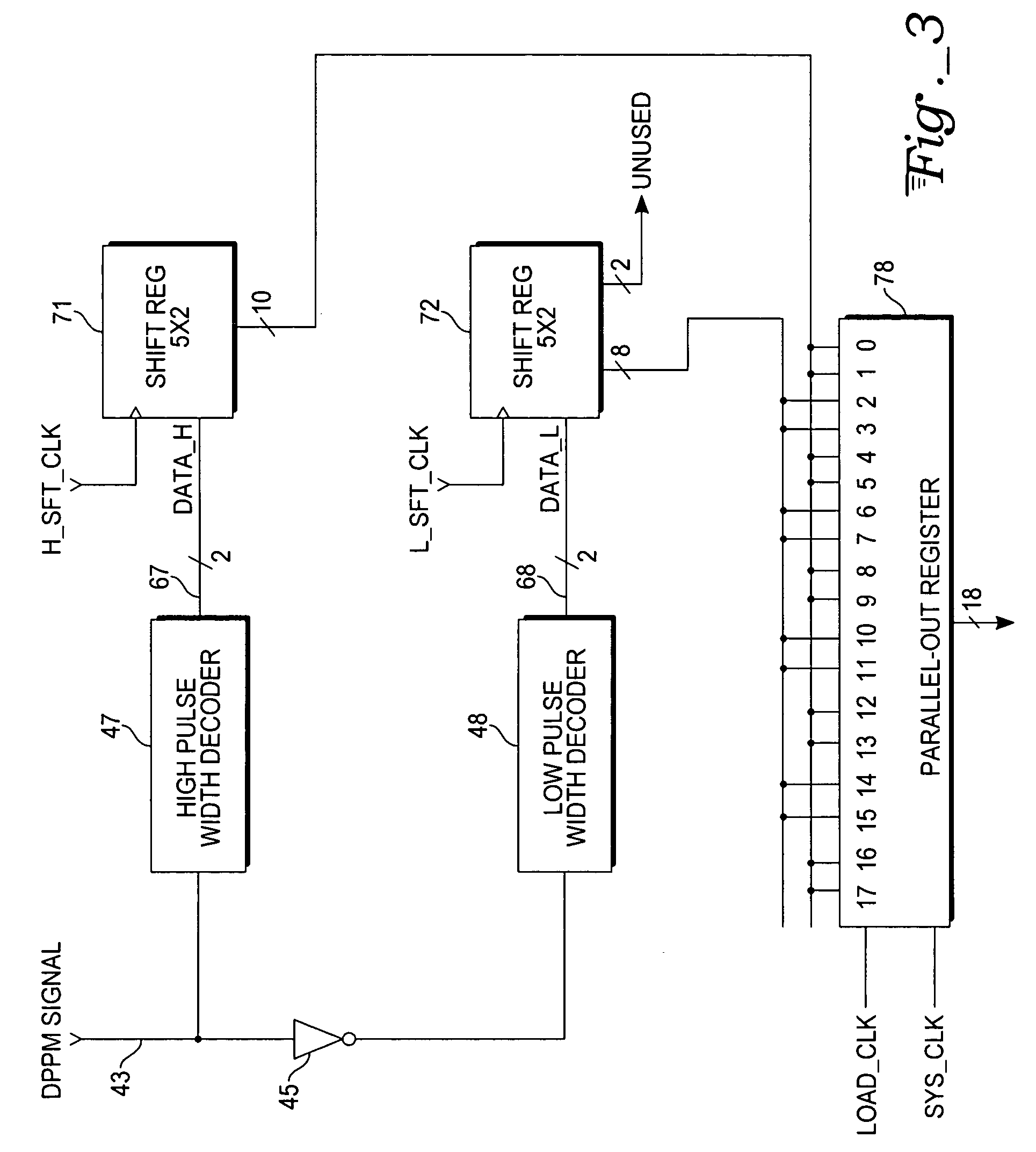Wide window decoder circuit for dual phase pulse modulation
a decoder circuit and pulse modulation technology, applied in the field of electronic decoder circuitry, can solve the problems of power consumption requirements, potential signal propagation error and recovery of original information
- Summary
- Abstract
- Description
- Claims
- Application Information
AI Technical Summary
Benefits of technology
Problems solved by technology
Method used
Image
Examples
Embodiment Construction
[0015] The present invention is a decoder circuit (an embodiment of which is shown in FIGS. 3-5) that converts dual phase pulse modulation (DPPM) signals back into their digital data representation.
The DPPM Signal Decoded by the Present Invention:
[0016] DPPM is a method of representing data, resident in digital circuitry in the form of binary circuit states (ones and zeros), as a string of alternating high and low signal pulses whose respective durations or widths represent 2 (or more) bits of data per pulse. The DPPM signal modulation technique is described in U.S. patent application Ser. No. 10 / 836,705, filed Apr. 29, 2004, which is assigned to the assignee of the present invention. That prior application also describes exemplary encoder hardware for producing the DPPM signal, as well as a different decoder circuit from the one described herein.
[0017]“Dual Phase” refers to the fact that the information is sent in a DPPM signal in both the high-going pulses and the low-going pu...
PUM
 Login to View More
Login to View More Abstract
Description
Claims
Application Information
 Login to View More
Login to View More - R&D
- Intellectual Property
- Life Sciences
- Materials
- Tech Scout
- Unparalleled Data Quality
- Higher Quality Content
- 60% Fewer Hallucinations
Browse by: Latest US Patents, China's latest patents, Technical Efficacy Thesaurus, Application Domain, Technology Topic, Popular Technical Reports.
© 2025 PatSnap. All rights reserved.Legal|Privacy policy|Modern Slavery Act Transparency Statement|Sitemap|About US| Contact US: help@patsnap.com



